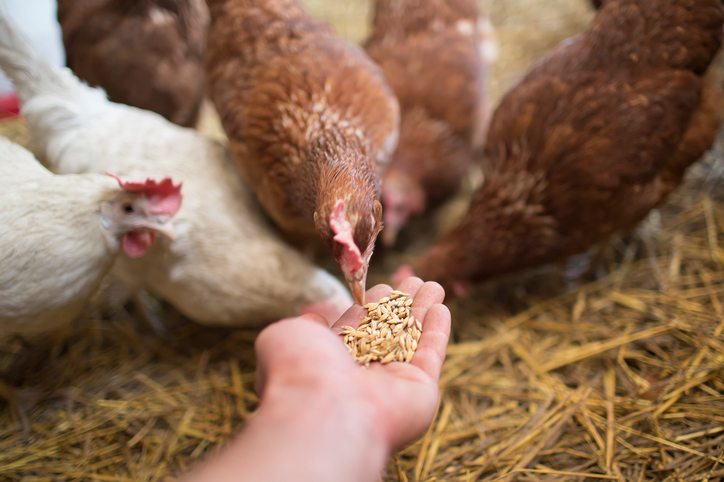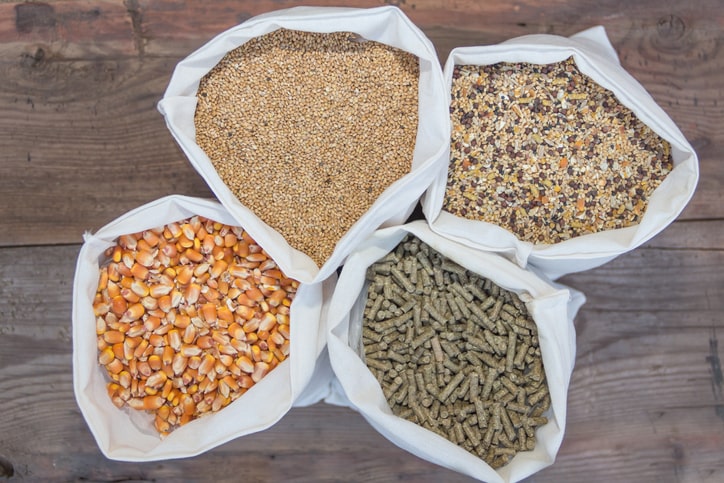Understanding how much feed a chicken needs is crucial for any poultry enthusiast looking to raise healthy and productive chickens. Feeding your chickens the proper amount can lead to better egg production, healthier birds, and cost savings in the long run. In this comprehensive guide, we delve into the various factors that determine the appropriate feed quantity and offer practical tips for managing your poultrys diet efficiently.

Why Proper Feeding Matters
Feeding chickens the right amount of food helps maintain their overall health and enhances their egg-laying capabilities. Proper nutrition can also prevent common health issues such as obesity, malnutrition, and feather pecking.

Factors That Determine Feed Quantity
Age of the chicken is a significant factor. Younger chicks require a different diet from adult chickens. The breed of your chicken also plays a role, as some require more food than others. Check out this mini and full-size breeds to understand more.
Environmental Conditions
Chickens in colder climates often eat more to maintain body heat. Conversely, chickens in warmer climates may require less food but more water for hydration.
Chicken Activity Levels
Active chickens consuming more food is common. Free-range chickens will naturally expend more energy than those kept in a confined space.
Feed Quality
High-quality feed means that your chickens will need less food compared to low-quality feed. This is because high-quality feeds are nutrient-dense and adequately meet your chickens’ dietary requirements.

Types of Chicken Feed
Commercial feeds, organic feeds, and homemade feeds are typically the three primary types of chicken feed. You can learn about different feeding options at Timber Creek Farmer.
Commercial Feeds
These are designed to provide a balanced diet. Commercial feeds often contain grains, proteins, vitamins, and minerals. Many chicken owners prefer this option because it’s convenient and ensures balanced nutrition.
Homemade Feeds
While more labor-intensive, creating your own chicken feed allows you to control what goes into your chickens’ diet. Often, this can be more cost-effective if you have access to grains and other feed components.

General Feeding Guidelines
As a rule of thumb, adult chickens consume about 1/4lb of feed daily. However, this can vary based on the factors mentioned earlier. Always observe your chickens and adjust the amount as needed.
Feeding Chicks
Chicks require a starter feed that is higher in protein to support their growth. Typically, young chicks need around 1 ounce of feed per chick per day, which can be gradually increased as they grow.
Feeding Layers
For egg-laying hens, layer feed should be provided. This type of feed contains additional calcium to support healthy eggshell formation. Laying hens need about 1/4lb of feed per day.
Feeding Broilers
Broilers, or meat chickens, require more protein to promote muscle development. Broiler feed typically contains higher protein levels to meet these needs.
Supplements and Treats
Beyond basic feed, supplements like grit and oyster shells can be added to your chickens’ diet to improve digestion and provide additional calcium.
Cost Considerations
Feeding chickens can varying in cost, depending on the type of feed and quantity. However, the benefits of maintaining healthy chickens often outweigh the costs. Consider bulk purchasing feed to reduce costs.
Practical Tips for Efficiently Feeding Chickens
Regularly Check Feed Levels: Always ensure your chickens have enough feed but avoid overfilling feeders to prevent waste.
Store Feed Properly
Proper storage is essential to keep the feed fresh and free from pests. Use airtight containers and store them in a cool, dry place.
Monitor Chicken Health
Regular health checks can alert you to any nutritional deficiencies. Look for signs like changes in egg production, feather quality, and overall activity levels.
Consistent Feeding Routine
Establish a routine to feed your chickens at the same time each day. This consistency helps them adjust better and maintains their dietary needs.
Adjusting Feed Based on Seasons
Feeding needs can change with the seasons. During the winter, chickens may need more feed to stay warm. In the summer, they may require less feed but more water. Adjust accordingly to ensure their wellbeing.
Common Feeding Mistakes to Avoid
Overfeeding can lead to obesity and health issues, while underfeeding can result in malnutrition. Ensure a balanced feeding cycle to avoid these common pitfalls.
Neglecting Water Supply
Water is as essential as feed. Ensure constant access to clean water, particularly during hot weather.
Inadequate Supplementation
Skipping supplements like grit or calcium can result in digestive and egg-laying issues, respectively.
Frequently Asked Questions
How much feed should a chick eat daily?
Young chicks typically need about 1 ounce of starter feed per day, gradually increasing as they grow.
Do free-range chickens need less feed?
Free-range chickens may need slightly less commercial feed since they forage for food, providing natural nutrition.
What’s the best feed for layers?
Layer feed containing extra calcium is recommended for laying hens to ensure strong eggshells and healthy eggs.
As an Amazon Associate, I earn from qualifying purchases.





